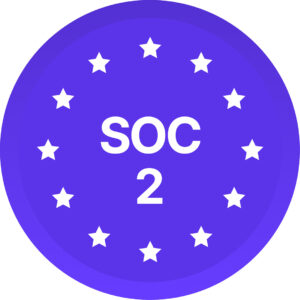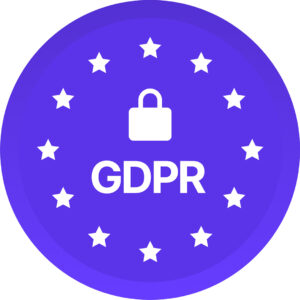As a linguist and DEI consultant, it is important to me to keep informed about how we communicate with one another in Canadian workplaces. Our knowledge and understanding of gender are expanding, as is the language we use to describe it and refer to one another.
Both of Canada’s official languages, English and French, have grammatical features which are inherently gendered.
In English, certain nouns and pronouns are gender specific when referring to persons or relationships: “daughter,” “chairman,” “actress,” “he”/“she.” You may have heard feminine pronouns also used to refer to inanimate objects, such as ships or cars.
In French, each object is considered, grammatically, to be either masculine or feminine: “la lune,” “le bureau.” Some jobs or role titles may have grammatically feminine or masculine alternatives: “le directeur”/”la directrice.”
Despite these frameworks, we can adapt our language use to include gender-neutral and gender-inclusive nouns, pronouns, and grammatical structures, with the goal of creating a more welcoming environment for all – especially in workplaces!
Borrowing a definition from the Public Service Alliance of Canada, “gender-inclusive language is a way of communicating that strives to treat people of all genders and those with no gender with respect and dignity – with the goal of making everyone feel included.” The use of gendered language in the workplace has measurable impacts on recruitment, advancement and perceptions of fairness. This creates an additional business imperative to use gender-inclusive language.
Reviewing job postings, job descriptions, policy language, or promotional copy provides many opportunities to reflect values of inclusivity. Tools like the Gender Decoder can help, as can being mindful of the language we use when writing, speaking, or signing.
Some examples of applying gender-inclusive language alternatives in workplace language are:
1. Replacing gender-specific terms with gender-neutral terms:
- Stewardess vs. Flight attendant
- Manpower vs. Workforce
- Ombudsman vs. Ombudsperson
- Man-made vs. Artificial
- Husband/Wife vs. Spouse, partner
- Man up vs. Toughen up
2. Replacing gendered titles with neutral terms:
- Dear sir/madam vs. Dear [professional title]
- Ladies and gentlemen vs. Everyone, folks
3. Replacing possessive pronouns with definite or indefinite articles:
- “If a complaint is submitted, the Ombudsman is required to submit his related report within three days.” vs. “If a complaint is submitted, the Ombudsperson is required to submit a report/the related report within three days.”
4. Using epicine or duplicated forms in French:
- « L’enseignant » ou « L’enseignante » vs. « La personnel enseignant »
- « femme » ou « homme » vs. « individu »
- « Les étudiantes et les étudiantes »
5. Using interpoints in French, along with adjective declensions:
- « Le collaborateur » ou « La collaboratice » vs. « La.Le collaborateur.ice »
- « Les traducteur.rices sont competétent.es »
6. Using neutral pronouns and phrases:
- “Employees are entitled to three weeks of vacation per year. To request vacation, he/she must request time off from his/her manager.” vs. “Employees are entitled to three weeks of vacation per year. To request vacation, the employee must request time off from their manager.
Some linguists, grammarians and critics of gender theory oppose the use of “they” as a singular pronoun.
For example, in the sentence: “The new manager will arrive next week; they will be given a tour of the first floor,” some will consider the use of “they” as ungrammatical, and only applicable in contexts referring to plural antecedents or multiple persons.
However, the use of the phrase “they” in a gender-neutral, singular context is perfectly grammatical as a standard third-person, gender-neutral pronoun. It is also a respectful way to refer to all genders.
Seeing yourself, your experience, and your identity reflected in the language you encounter can help you relate to what you are reading. Challenging yourself to increase your knowledge and usage of gender-inclusive language can improve your empathy and help you reach wider audiences more effectively.
At Diversio, our work intersects with and incorporates gender-inclusive language every day. Whether we’re facilitating learning sessions on Gender Diversity in the Workplace or Inclusive Communications or conducting comprehensive policy reviews with an DEI lens, we do our best to live our values of inclusivity through the language we use.
We hope you consider your audience and your impact by reaching out to us at hello@diversio.com and by checking out the helpful links below:
- United Nations guidelines for gender-inclusive language in English
- Amnesty International – guide de langage inclusif
- Liste de termes épicènes ou neutres pour la rédaction épicène | BDL (gouv.qc.ca)
- Canadian Digital Service – Writing without excluding: Inclusivity in the French language
- Government of Canada – Gender-inclusive, non-binary, and gender-neutral language in English writing
This blog was authored by Sheena Prasad and was previously published by Diversio EDU (formerly CCDI Consulting) in March 2024.
Our newsletter and blogs feature personal opinions and diverse viewpoints. We aim to create a safe space for our team to share their perspectives on diversity and inclusion. Please note that individual articles may not align with every reader’s view or comprehensively cover a topic. We appreciate the diversity of opinions and respect our team’s contributions.

